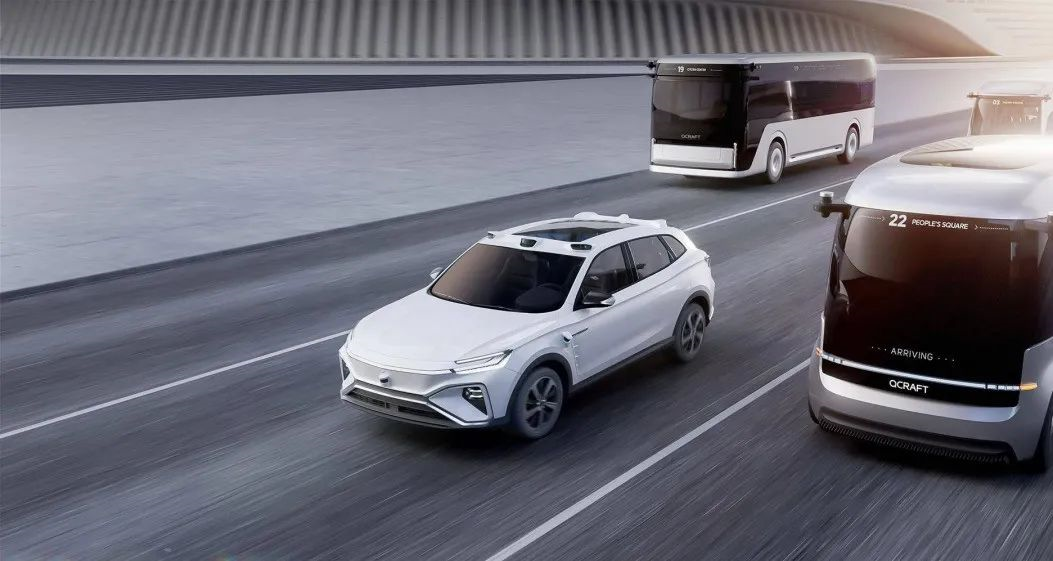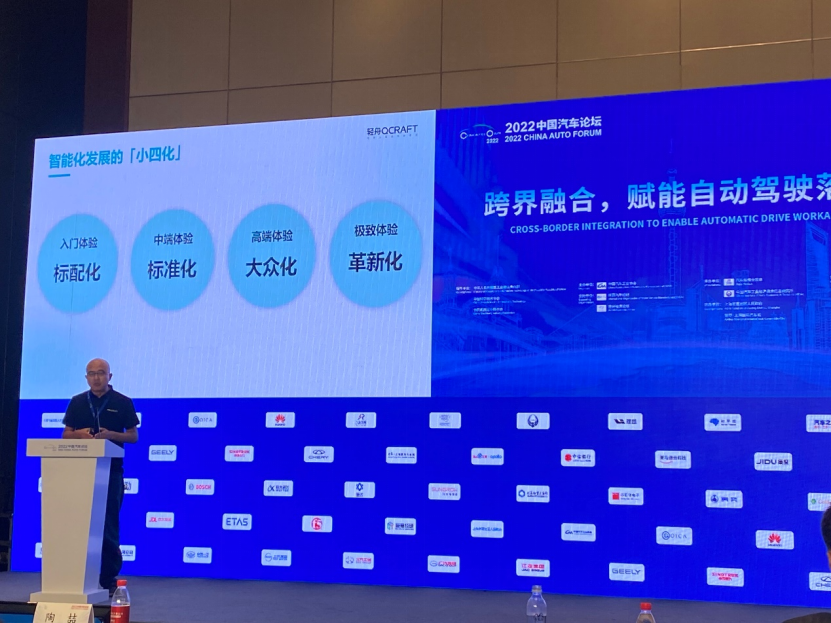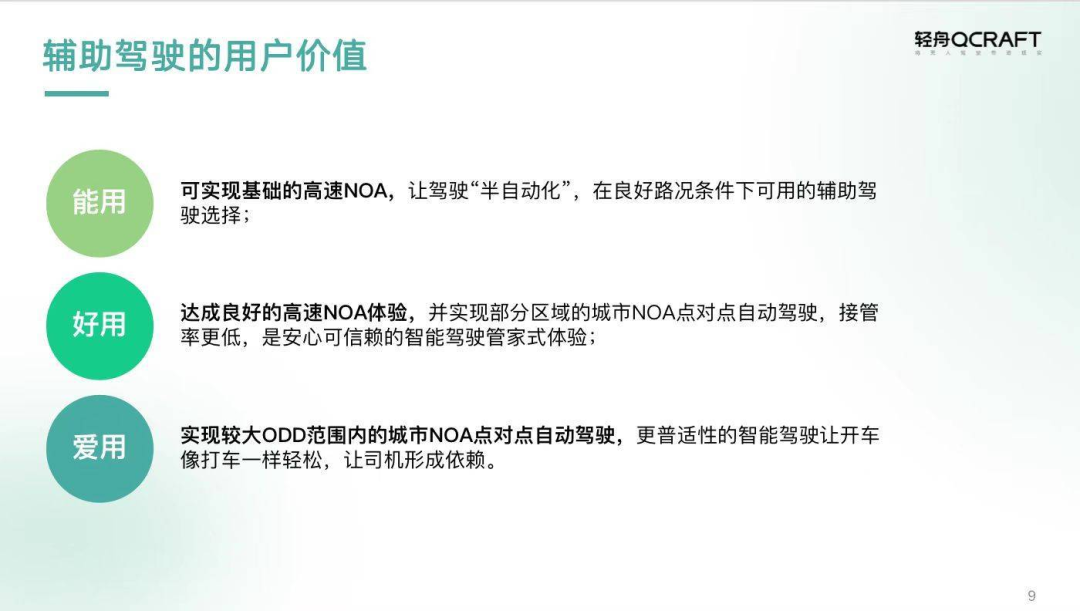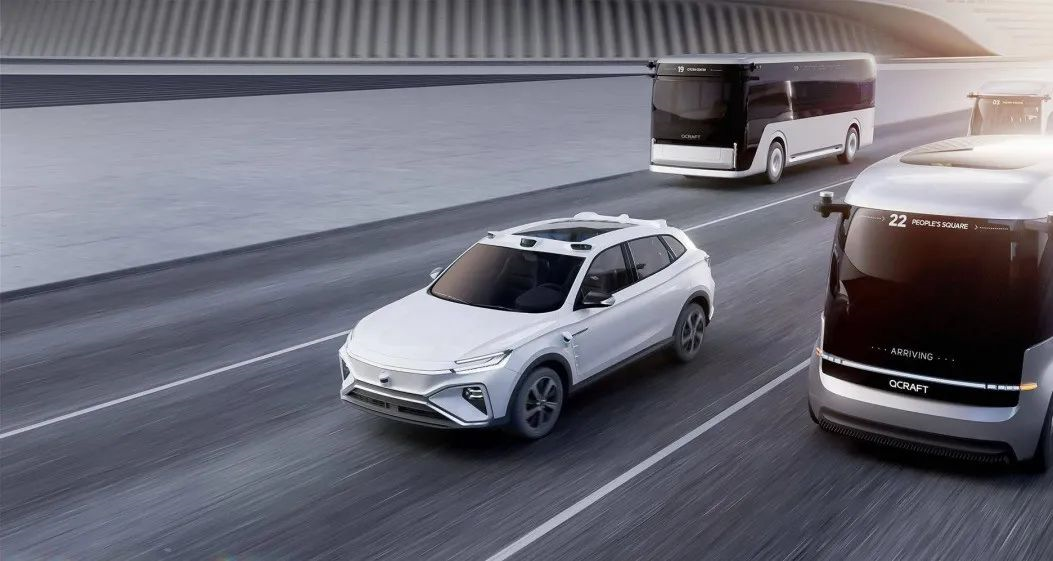Writing by | Roomy
Edited by | Zhou Changxian
It can be said that the earliest unmanned driving system of QZ Intelligent Navigation was “born in obscurity.”
In March 2019, Yu Qian, who worked at Waymo as Tech Lead of machine learning algorithm development for perception key modules, together with Hou Cong, Dafang, and Wang Kun, all from Waymo, founded QZ Intelligent Navigation after three months of consideration.
With only four people and a few core employees, they didn’t even have an office. They bought a test car and started writing code from scratch.
At that time, their positioning for the company was a universal solution for unmanned driving. The beginning of the story was not exactly an exciting one. But they had a passion in their hearts and believed “this can be done.”
One month after the establishment of QZ Intelligent Navigation, Tesla officially released the automatic driving hardware 3.0 with self-developed FSD chips, which cost $7,000. Anchoring themselves to pioneers, QZ Intelligent Navigation had set a long-term goal for themselves: to bring unmanned driving into reality.
The most crucial challenge to bringing unmanned driving into reality is the balance between technical safety and cost control. This is a difficult long-term process that QZ Intelligent Navigation is well aware of.
After four years of exploration, QZ Intelligent Navigation has summarized the user value of assisted driving in six words: easy to use, practical, and loved.
These six words also correspond to the fact that advanced assistance driving is the inevitable way to achieve unmanned driving. In other words, it is to enter with L2 mass production and gradually realize the landing of L4.
“Directly jumping from L2 to L4 in China will face many scenario problems, which requires long-term investment to solve.” Yu Qian, founder and CEO of QZ Intelligent Navigation, has a clear view of the current situation of autonomous driving.
He believes that the most important thing at present is to bridge the gap between L4 and front-loading mass production, that is, to bring the high-level assisted driving city NOA application into reality.
The road is right.
Finding the Bridge Between Technology and Business
“How to balance between ideal and survival between L4 and L2?” Hou Cong, co-founder and CTO of QZ Intelligent Navigation, was asked a practical question.
This is the English Markdown Translation
Behind this issue, there is a general anxiety exhibited by the industry after several domestic startups in the field of autonomous driving frequently ran into problems. Argo AI, a startup company in the autonomous driving sector, declared its collapse, which, while established in a favorable period, collapsed on the eve of mass production. Although the autonomous driving department Mobileye, under Intel, rang the bell at Nasdaq, its market value diminished significantly.
These news have made people somewhat negative about the prospects of level 4 autonomous driving, and some even believe that “the wind of autonomous driving is about to decline.” The underlying problem is the breakthrough in advanced autonomous driving technology and the difficulty in commercializing it.
As a start-up company, we need to find a way out. The question of how to survive was given to QZJH, which is starting with L4. In response, Hou Congxian expressed a firm position on the L4 route, “Robotaxi, that is L4, and we firmly believe that it will definitely be realized.”
In his opinion, this process is not a game.
Argo AI, backed by Ford and Volkswagen, ended up disintegrating mainly due to the problem of route selection, which is not well thought out for a start-up company to realize the final product.
When L4 cannot be commercially deployed for a long time, we should find a way to move forward. QZJH’s approach is “stand on high ground and go to wide places.”
On May 18th, QZJH launched the “Dual-Engine Strategy,” proposing two landing strategies:
Using the world’s leading public road L4 autonomous driving software and hardware solutions to create the “power engine,” strengthening the technical depth and supporting long-term development.
By relying on the leading technology and free-configurable front-loading mass production plan of autonomous driving, create the “innovation engine,” and help users innovate with safer, more reasonable, and cost-effective high-performance solutions, constantly expanding the width of the field and nourishing the development of technology.
“Pushing for a larger business cycle through a business loop and gradually realizing autonomous driving, this is the underlying logic that QZJH has been adhering to from the beginning.” Hou Congxian believes that “we need to find a good bridge between technology and commercialization and close the gap between them.”
To this end, QZ Intelligent Navigation proposes that the evolution of intelligent driving will present a step-by-step, progressive direction of “four developments”: including the standardization of entry-level user experience, the standardization of mid-range user experience, the popularization of high-end user experience, and innovation of the ultimate driving experience.
“Standardizing the entry-level user experience” is a standard solution for some entry-level functions, such as lane-keeping with monocular vision and adaptive cruise control.
“We believe that this solution is currently more stable because it has undergone a lot of verification,” said Hou Cong.
“Standardizing the mid-range user experience” is about continuously promoting the standard definition of various commonly used functions and application effects in intelligent driving, bringing users clearer expectations and unified experiences.
For example, how to define the functions of urban or highway NOA more clearly.
“Popularizing high-end user experience” is about constantly sinking the most advanced functions from high-priced car models to ordinary car models while maintaining the same or even lower selling prices, and gradually increasing the installation rate of urban NOA.
“Innovating the ultimate driving experience” will continuously unlock new scenes of intelligent driving technology application and new experiences of human-computer co-driving, bringing innovation to travel methods. This is also the final technical maturity and commercialization of L4.

“We can currently regard this as a progressive approach, starting with urban NOA and continuously obtaining data and cash flow closure on this basis, allowing us to directly iterate technology and ultimately achieve the landing of L4,” Hou Cong said.
QZ Intelligent Navigation is not spreading its resources too thin and taking on everything, but is bringing together good technical paths and business models.
Hou Cong believes that directly moving from L2 to L4 faces many problems regarding scenarios. Therefore, the most pragmatic approach is to use a progressive high-level assisted driving to feed back autonomous driving, which is a road to achieve large-scale implementation.
This is “using war to sustain war” and achieving scale based on practicality.
“Can be Used, Easy to Use and Loved”
Why is the development of urban NOA highly valued?”City NOA is the ceiling for assisted driving and the entry threshold for autonomous driving,” said Hou Cong.
Mass production of front-loading can verify technology in a wider range of scenarios, accumulate data, and serve more application scenarios. In this process, the development of City NOA can be said to be of paramount importance for advanced assisted driving.
This is the tone set by QZT for City NOA, and it is also a recognized fact in the field of autonomous driving. It can be said that City NOA is the most critical competitive point in the future and the key technology to meet consumers’ expectations of intelligent driving.
Currently, some models such as XPeng P7, Ideal ONE, and Tesla have opened up the high-speed NOA function, and the assisted driving system is becoming popular. However, there is an inalienable fact that currently, most autonomous driving is limited to 10% of high-speed scenarios.
QZT believes that if an intelligent driving product can only be opened in 10% of the scenarios, it cannot meet consumers’ expectations. How to implement the front-loading mass production plan for 90% of urban NOA scenarios is the key.
Although many automakers have announced their plans to launch City NOA functionality, this year is also known as the first year of City NOA, but the current plan still faces unresolved challenges.
The challenges primarily come from the complexity of urban NOA scenarios:
-
Complexity of traffic participants: pedestrians and vehicles of all kinds mixed together.
-
Complexity of traffic rules: various traffic lights, overpasses, and people and vehicles not complying with traffic rules.
-
Limited coverage of high-precision maps: a large amount of visual information is required to process dynamic and static identification and facilities.
These few words make autonomous driving companies very worried.
The reason is nothing more than the need for more efficient data utilization when facing a wider range of ODD application scenarios. The interaction and gaming scenarios of various complex traffic participants in the city require safety guarantees and higher driving efficiency during prediction, planning, and control.
Compared with the relatively single operating conditions of high-speed NOA, urban NOA needs to achieve more complex operating conditions in 90% of scenarios, requiring higher perception ability, higher computational chips, and a larger amount of high-precision maps.Updating is becoming increasingly complex. This requires self-driving companies to have stronger algorithm optimization capabilities and mature engineering capabilities.
The problem is clear to everyone, but finding a solution is not easy.
Similarly, following the logic of “Simplifying for the Fourth Screen”, in the process of landing advanced assisted driving, Pony.ai plans to gradually divide user value recognition into three stages: “usable, convenient, and beloved”.

“We will continue to expand the ODD of City NOA to make assisted driving from usable to convenient, and ultimately make users love it, making driving as easy as taking a taxi with more universal intelligent driving,” Hou Cong believes that the technology of autonomous driving should not be icy and cold.
The ultimate goal is still the user experience value.
What is “usable”? The basic L2 function, which can be used on highways and overpasses, can realize the desired auxiliary function definition.
What is “convenient”? With the upgrading of hardware and the iteration of solutions, the ability to deal with scenes will continue to improve. Including insertion, parallel driving of large vehicles, and other long-tail scenes can be handled relatively well. Basically, point-to-point driving assistance can be achieved on highways.
What is “beloved”? It must cover most driving scenarios. When more than 90% of urban scenarios are covered, the product will be made more secure and reassuring, and users will continue to rely on it, which will lead to the beloved stage.
From usable to convenient, it is to realize the driving ability of City NOA in the scene. However, Pony.ai is also aware that advanced assisted driving is not achieved overnight, and the experience and safety of the scene need to be continuously polished.
After 4 years of exploration, the accumulation of L4 experience, talents and research and development system is the advantage of Pony.ai’s development of advanced assisted driving.
“Only based on L4 technology can we make good NOA functions, and the progressive NOA function can also continuously improve the technical capabilities of L4,” Hou Cong said.
A powerful methodology, favored by many automakers
Pony.ai has always been thinking about what kind of solution can meet the expectations of consumers and automakers for intelligent driving, and define and solve problems.
Now, in Yuan Qian’s mind, “a cost-effective City NOA solution combined with a powerful closed-loop data capability is the answer to this problem.” And perception system, PNC, and data-driven constitute the three key elements of Pony.ai’s advanced assisted driving solution.### Perception System: Temporal Fusion of Multiple Sensors
Based on the ultra-converged perception solution, QZ Zhihang proposes the first domestic large-scale model OmniNet that realizes the fusion of visual, LiDAR, and mmWave radar features and temporal sequences on a production-level computing platform, capable of outputting multi-task results of visual, LiDAR, and mmWave radar in the BEV and image spaces.
Compared to traditional solutions, OmniNet can save 2/3 of computing resources, meet the application requirements of automotive-grade chips, and adapt to different sensor configurations at low cost while having higher perception fusion accuracy and model iteration efficiency.
Besides achieving maximum compatibility with different automakers in the perception solution, QZ Zhihang also proposes a feasible solution of urban NOA with only one LiDAR in terms of hardware matching.
Through the perception algorithm ability, including OmniNet, QZ Zhihang can make the most of the LiDAR with obvious cost advantages.
Decision and Planning: Spatiotemporal Joint Planning
QZ Zhihang believes that in the era of urban NOA, PNC determines the high and low levels of autonomous vehicles.
PNC determines the driving strategy of vehicles under different road conditions, grasp the timing, control the speed and direction, etc.
QZ Zhihang has a creative spatiotemporal joint planning algorithm for decision and planning, which searches both the space and time results and can often find the optimal solution in complex dynamic scenes, and even does better than human behavior in some scenarios in terms of comfort and safety.
“In urban scenes, there are many complexities that cannot be solved by rules, and the ability can only be improved through a data-driven approach.” Hou Cong said.
For example, when encountering unexpected obstacles, spatiotemporal joint planning can enable autonomous vehicles to calculate a best trajectory in real-time to avoid them instead of being confined to a fixed path, thus ensuring better safety.
In contrast, the common “spatiotemporal separation planning” used in the industry will divide trajectory planning into two separate problems of path planning and speed planning, which cannot simultaneously calculate both and are rigid and inflexible.Hou Cong believes that space-time joint planning is the most suitable automatic driving technology for Chinese roads.

Of course, good decision planning cannot be separated from good prediction. The self-developed prediction model Prophnet by Qzong Technology can achieve prediction of intention and trajectory up to 10 seconds, with an average error of only 3.73 seconds, and can support the prediction of hundreds of objects at the same time.
Data-Driven: Fast Closed Loop
Data-driven is the foundation for efficient iteration and long-term development.
“Large-scale operation of automatic driving requires facing a large number of long-tail problems, which can only be solved through efficiency improvement. Therefore, we propose the ‘automatic driving super factory’ methodology,” emphasized Yu Qian.
The core of Qzong Technology’s automatic driving super factory is data-driven plus efficiency improvement, which is the foundation for building excellent and advanced auxiliary driving solutions. All technological advancements of Qzong Technology are developed based on this methodology, and carried out around data-driven and efficiency improvement.
How to understand it?
In Yu Qian’s words, it means achieving automatic driving by “building rockets” rather than “building ladders”.
With this methodology, a data loop is formed through data-driven methods, and then the loop is made faster and faster through efficiency improvement. This allows the huge amount of data generated by smart cars every day to reach a state of increasing usefulness and freshness, thereby achieving efficient technological iteration.
“The productization of the automatic driving super factory is Qzong Matrix, which includes a set of capabilities for bottom-up data representation, storage, visualization, management, testing and validation, and simulation platforms, including our data platform, standard platform, training platform, and simulation platform,” said Yu Qian.

Qzong Matrix is a self-developed automatic driving research and development toolchain, with simulation as its core, spanning the entire process from research and development to testing and operation, helping automakers establish data-driven capabilities for automatic driving system development.
This toolchain is currently open to the public and serves not only Qzong Technology but also its partners. For example, it allows OEMs to build their own automatic driving super factories on their own data assets.## The Advantage of QCraft in Applying L4 Technology and Autonomous Driving System
For QCraft, it is clear that the advantage lies in applying the L4 technology and autonomous driving system to the driver assistance. Thanks to the “more accurate perception, better vehicle compatibility, and more efficient iteration”, QCraft is better able to meet the mass production needs of City NOA, as well as maintain excellent cost control. As a result, QCraft has won the favor of many automakers in the shortest possible time through its technical capabilities and reliable performance.
“We have such a strong underlying methodology that entering mass production is very natural,” said Yu Qian. In the future, through cooperation with automakers, QCraft will continue to generate blood for our industry.
Becoming a Technology Service Company?
In addition to a deep understanding of the technology, QCraft has also undergone a significant transformation in its four years of entrepreneurship, which is in its mindset: shifting from a tech company to a solution provider that is more design-oriented, user-oriented, and automaker-oriented.
This means that QCraft is in the process of transforming from a technology company into a technology service company whose essence is to continuously create value for customers centered on the customer. To be successful in this field, QCraft is a key tool.
In 2020, QCraft launched Driven-by-QCraft, an autonomous driving solution that focuses on the complexities of the urban traffic scene. In two years’ time, it has been upgraded to the fourth generation, and is now a parallel model for autonomous driving and advanced driver assistance.
The Chinese name of this solution, “Cheng Feng,” means “when a long wind breaks the waves, the boat will sail directly into the clouds to cross the sea.” This is a nod to the latest cutting-edge hardware and software technologies that QCraft has integrated into its solutions, which can fully promote the mass production and implementation of City NOA.
From the perspective of automakers, in addition to building up-to-date autonomous driving hardware and software technology, QCraft also needs to consider the configuration of its technology solutions and have a “thinking for the automakers” mindset.
It is not about taking out any plan for automakers which lets them order accordingly. Instead, they need to configure a variety of solutions based on the automaker’s mass production requirements, and not just stacking materials.
Yu Qian said that “achieving 99% L4 capabilities with only 10% of the cost” is what automakers hope for and what QCraft is committed to. He has always emphasized that “through high-performance and cost-effective mass production programs, we can meet the mass production needs of different levels and functions of automatic driving for different automakers.”4 years later, QZ Intelligent Navigation has a deeper understanding of autonomous driving, especially in the development of L4 and lower-level technologies. Their experience has led to improvements in the design of the entire underlying framework and algorithm selection.
In terms of advanced driver assistance systems, QZ Intelligent Navigation has clear solutions. Hou Cong believes that existing advanced driver assistance systems can be divided into three main configurations:
- Low-end systems that primarily use monocular vision solutions for lane keeping and adaptive cruise control on highways, at costs below 5,000 RMB, which is a relatively mature market.
- Mid-range configurations, with a cost of nearly 10,000 RMB, primarily utilizing multi-camera vision solutions for NOA functions on highways.
- High-end configurations, which incorporate at least one lidar sensor, to address NOA scenarios in urban environments.
There is still much debate in the industry as to whether high-tier ADAS requires lidar sensors. “The fastest way to achieve urban NOA functionality is with a high-end configuration that includes at least one lidar sensor,” according to Hou Cong.
Through collaboration with strategic partners such as Horizon Robotics and its powerful computing capabilities, QZ Intelligent Navigation has proposed an autonomous driving solution that provides high cost-effectiveness at a cost of only 10,000 RMB, while also being adaptable to changing situations.
Ultimately, the development of advanced driver assistance systems must consider both safety and cost. Safety is a red line, while cost is a bottom line.
To promote the widespread adoption of advanced driving assistance systems, QZ Intelligent Navigation has launched DBQ V4, its fourth-generation mass-production-level autonomous driving solution. This is a highly cost-effective solution that integrates industry-leading autonomous driving technology into the software and hardware systems. With just 10% of the cost, it can achieve an L4 capability of 99%. It can be produced at a low cost of only 10,000 RMB.
Various configurations of this solution, including standard, enhanced, and flagship models, offer flexibility by enabling features to be tailored to specific vehicle types and usage scenarios.“`
In the premise of controlling costs, efficiently promoting the mass production of urban NOA (Navigation On Autopilot) is a forte of QCraft.
Recently, in the video of Xpeng NGP (Navigation Guided Pilot) in XPeng City, Wu Xinzhou, Vice President of Autonomous Driving in Xpeng Motors said, “The biggest pain point in doing city NGP is the lack of benchmarking. We hope to benchmark directly against L4 (Level 4) companies and achieve the experience of L4 companies at the cost of a mass-produced car.”
Subsequently, Yu Qian humorously responded, “To achieve the L4 experience of urban NOA at the cost of a mass-produced car, is the forte of QCraft.”
Final Thoughts:
Besides quickly transforming into a technology service company, QCraft also has a consciousness of co-creating an autonomous driving ecosystem with its partners.
“We don’t do everything. We should focus on our own strengths and collaborate with other suppliers to provide the best solution for car companies and users,” Hou Cong believes. If car companies develop everything on their own, it will cause certain resource waste.

Currently, QCraft and Horizon have joined forces, and QCraft’s City NOA solution equipped with Horizon Journey 5 chips has been put into use.
This solution is tailored for high-speed + urban NOA and has fast, accurate, and stable perceptual capabilities and strong scenario adaptability, setting the safety benchmark for mass-produced autonomous driving solutions.
For QCraft, deeper cooperation with ecological partners not only means broader data and scenarios, but also refining algorithm and technical capabilities.
From targeting industry trends, grasping the intelligent needs of car company customers, to rapidly transforming with a “dual engine” strategy and obtaining favors from multiple car companies, all prove QCraft’s deep understanding of the autonomous driving market and its rapid digestion of customer needs, as well as its strong products, services, and engineering landing capabilities.
These thoughts and efforts have prepared QCraft to achieve its vision of “bringing autonomous driving to reality” as soon as possible.
“`
This article is a translation by ChatGPT of a Chinese report from 42HOW. If you have any questions about it, please email bd@42how.com.
